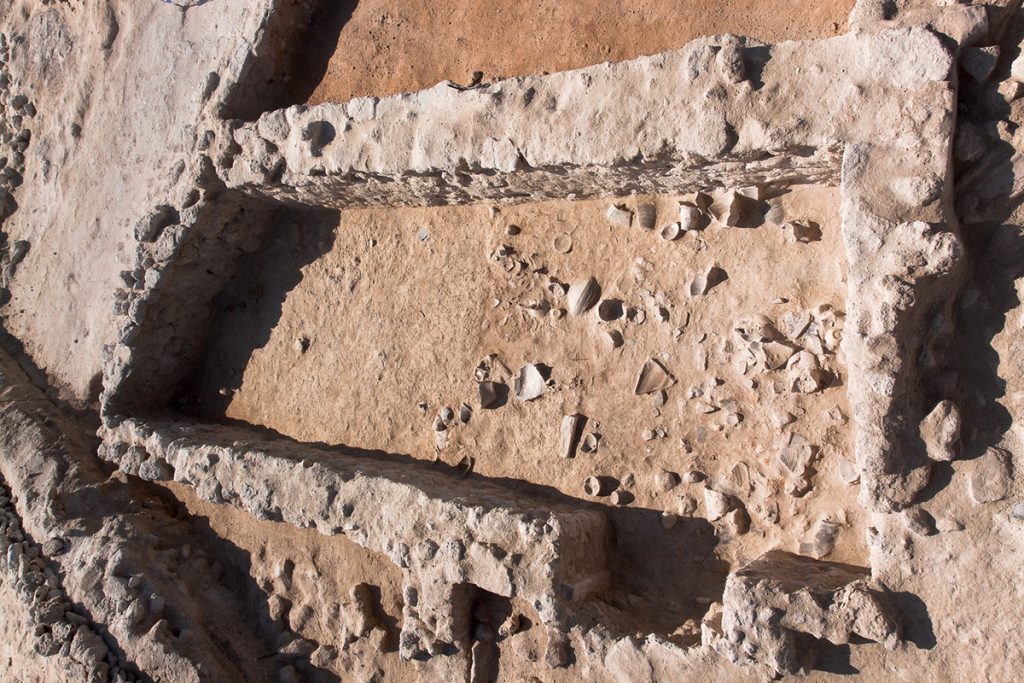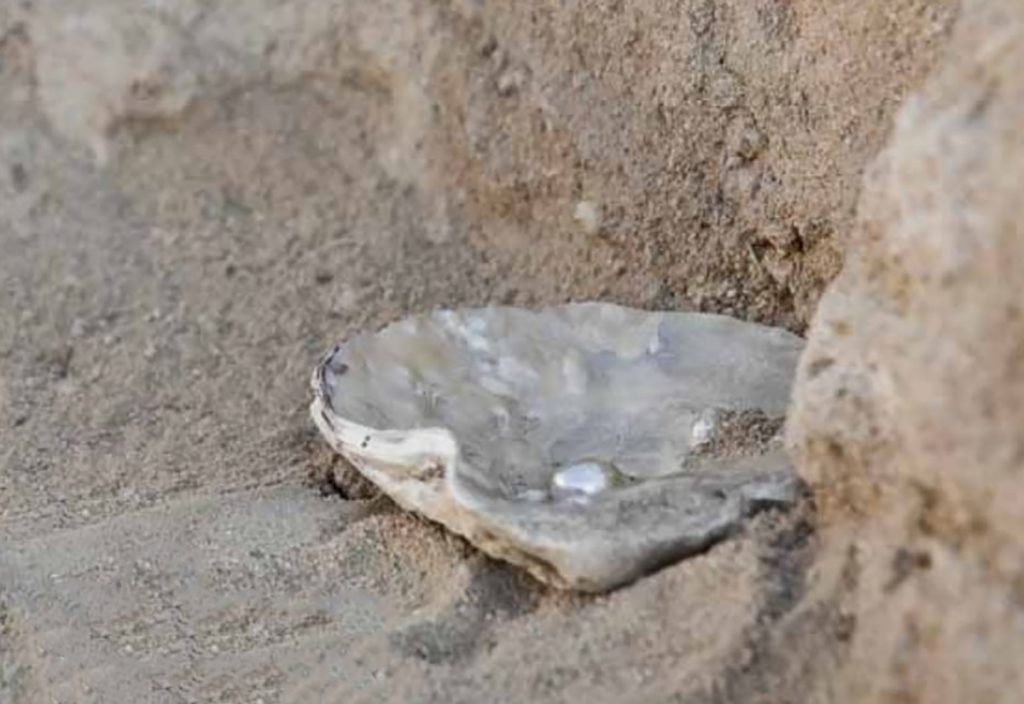អាល់ហ្ស៊ូបារ៉ា (Al Zubarah ) គឺជាស្ថានីបុរាណវិទ្យា និងជាទីតាំងវប្បធម៌មួយនៅក្នងប្រទេសកាតា ដែលមានចម្ងាយប្រមាណជាង ៨៥គីឡូ ពីរាជធានីដូហា (Doha)។ ស្ថានីយបុរាណវិទ្យាមួយនេះ ជាបណ្តុំ វប្បធម៌ នយោបាយ ហើយក៏ជា កំពង់ផែ សម្រាប់ការជួញដូរពាណិជ្ជកម្មដ៏សំខាន់នៅក្នុងតំបន់ឈូងសមុទ្រពែក្ស នៅចន្លោះស.វ.ទី១៨ និងទី២០ ជាពិសេសការជួញដូរ គុជខ្យង( Pearl trading)។
ទីតាំងនៃស្ថានីយបុរាណវិទ្យា អាល់ហ្ស៊ូបារ៉ា ត្រូវបានកំណាយដំបូងនៅដើមឆ្នាំ ១៩៨០ដោយក្រុមបុរាណវិទ្យាកាតា។ អំឡុងពេលនោះ គេបានរកឃើញសំណង់ជាបន្ទប់តូចៗជាច្រើននៅខាងត្បូងនៃតំបន់ស្ថានីយ។ ក្រោយមកការស្រាវជ្រាវថ្មីៗជាច្រើន បានចាប់ផ្តើមពីឆ្នាំ២០១៤ ដោយក្រុមអ្នកស្រាវជ្រាវជាតិ កាតា និងអន្តរជាតិ បានសិក្សានៅទីតាំងច្រើនកន្លែង និងបានបង្ហាញពីទិន្នន័យដ៏សំខាន់ពីការស្រាវជ្រាវនេះ ក្នុងតំបន់ អាល់ហ្ស៊ូបារ៉ា គឺជាតំបន់បែងចែកជាបីផ្នែកផ្សេងគ្នា ដែលផែ្នកធំជាងគេ គឺជាទីក្រុង រួមមាន សំណង់ព្រះវិហារ វាំង និង កំពង់ផែ សម្រាប់តភ្ជាប់ពីមហាសមុទ្រឥណ្ឌា អារ៉ាប់ និងអាស៊ីខាងលិច។ តាមរយៈទិន្នន័យបុរាណវិទ្យា បានបង្ហាញថា ទីក្រុងនេះត្រូវបានកសាងនៅស.វ.ទី១៨ ពោល ក្នុងឆ្នាំ១៧៦០គ.ស.។ ផ្នែកទីពីរ គឺជាកំពែងដែលព័ទ្ធជុំវិញក្រុងហៅថា តំបន់ Qal’at Murair និងចុងក្រោយជាបន្ទាយ ( Al Zubarah fort) ដែលកសាងនៅឆ្នាំ១៩៣៨។
បន្ទាប់ពីកំណាយនៅទីតាំងស្ថានីយនេះរួច អ្នកស្រាវជ្រាវបានដឹងថាទីតាំងស្ថានីយនេះជាទីតាំងដ៏សំខាន់ជាងគេនៅក្នុងប្រទេសកាតា ដោយបានរកឃើញនូវភស្តុតាងសំខាន់ជាច្រើនដូចជា កុលាលភាជន៍ជាច្រើន ដែលមានប្រភពមកពី ចិន អាហ្វ្រិក ឥណ្ឌា និងជាពិសេសគុជខ្យង។
គួរបញ្ជាក់ដែរថា ទីក្រុងនៃ តំបន់អាល់ហ្ស៊ូបារ៉ា ត្រូវបានបោះបង់ចោលអស់រយៈពេលជាង ២០០ឆ្នាំ ប៉ុន្តែសំណង់ស្ថាបត្យកម្មនៅទីនោះ នៅល្អប្រសើរច្រើន។ ស្ថានីយបុរាណវិទ្យាផ្សេងទៀត ក្នុងប្រទេសកាតា គឺភាគច្រើនជាសមុទ្រខ្សាច់។ រីឯសំណង់ កំពែង Qal at Murair វិញដែលមានរាងជាចតុកោណព័ទ្ឋជុំវិញក្រុង ដែលតាមរយៈការធ្វើកំណាយបុរាណវិទ្យាបានរកឃើញនូវសំណង់ផ្ទះ សំណល់គ្រឹះព្រះវិហារនៅក្បែរនោះ ដោយអ្នកស្រាវជ្រាវសង្ឃឹមថា និងបន្តរកឃើញសំណង់ផ្សេងៗ ជាបន្តបន្ទាប់ទៀត ដោយសារសំណង់ភាគច្រើនត្រូវបានកប់ក្នុងខ្សាច់។ ចំណែកបន្ទាយ ( Al Zubarah fort) ត្រូវបានកសាងនៅអំឡុងឆ្នាំ១៩៣៨ ដោយ ស្តេច Sheikh Abdullah bin Jassim Al Thani ដើម្បីការពារតំបន់ខាងជើង នៃឈូងសមុទ្រពែក្ស។ សំណង់នៃបន្ទាយនេះមានទម្រង់រាងការ៉េ ដោយមានកំពែងខ្ពស់ ពីឥដ្ឋ និងមានតួប៉ម ៤ នៅគ្រប់ទិស។ រហូតដល់ឆ្នាំ ១៩៨៦ ទីនេះ នៅតែបន្តប្រើប្រាស់ជាមូលដ្ឋានទ័ព និងប៉ូលីសក្នុងតំបន់នេះ និងមកបច្ចុប្បន្នទីតាំងបន្ទាយនេះបានក្លាយជាសំណង់បេតិកភណ្ឌ និងសារមន្ទីរប្រវត្តិសាស្រ្តក្នុងតំបន់។
សរុបតាមរយៈទិន្នន័យបុរាណវិទ្យាជាច្រើន បានបង្ហាញថា តំបន់ស្ថានីយអាល់ហ្ស៊ីបារ៉ា គឺជាមជ្ឃមណ្ឌលវប្បធម៌ នយោបាយ និងតំបន់ពាណិជ្ជកម្មដ៏សំខាន់នៅក្នុងតំបន់សមុទ្រពែក្ស លើការ ជួញដូរ រ៉ែ ប្រេងឆៅ និងគ្រឿងបរិភាគផ្សេង ដែលចាប់ពីស.វ.ទី ១៨ រហូតដល់ស.វ.ទី ២០៕

ប្រភព៖ UNESCO

(ប្រភព៖ UNESCO)

(ប្រភព៖ UNESCO)


កុលាលភាជន៌ចិន និងឥណ្ឌា និងគុជខ្យងដែលរកឃើញនៅក្នុងរណ្តៅកំណាយ (ប្រភព៖ Al Zubarah: Qatar’s Largest Heritage Site – Qatar Museums (qm.org.qa))

————————————-
Culture of Al Zubarah
Al Zubarah is an archeological site and a cultural site in Qatar, more than 85 km from Doha. This archeological site is a cultural and political center and also a major trading port in the Persian Gulf between the 18th and 20th centuries, especially pearl trading.
Later, the recent research began in 2014, with Qatari and international researchers researching at several sites and presenting significant data from the research in the Al-Zubara region, which is divided into three parts. The largest part is the capital city, including churches, palaces, and ports connecting the Indian Ocean, Arabia, and West Asia. The archaeological data show that the city was built in the 18th century in the year 1760. The second part is the wall surrounding the city called Qal’at Murair, and the last part is Al Zubarah fort that was built in 1938.
After excavating the site, researchers realized that the site is the most important site in Qatar, which has found important evidence such as ceramic from China, Africa, India, and India, especially pearls oyster shells.
The city of Al-Zubara has been abandoned for more than 200 years, but the architectures are still in good condition. Other archeological sites in Qatar are mostly sandy beaches. According to excavation inside the rectangular rampart of Qal at Murair has found house structures, and the church foundation structure, as well as researchers, hoping to find other important structures because most of the structures are buried in the sand. The Al Zubarah Fort was built in 1938 by King Sheikh Abdullah bin Jassim Al Thani to protect the northern part of the Persian Gulf. The structure of the fort was square in shape, with high walls and four towers in all directions. Until 1986, it continued to be used as a military and police base in the area, and today the fort has become a heritage site and historical museum site.
Overall, base on archaeological data shows that the Al-Zubarah site was a major cultural, political and commercial center in the Persian Gulf for business on minerals, raw fuel, and other commodities dating back from the 18th to 20th century.
អត្ថបទដើម៖ លោក អេង តុលា






